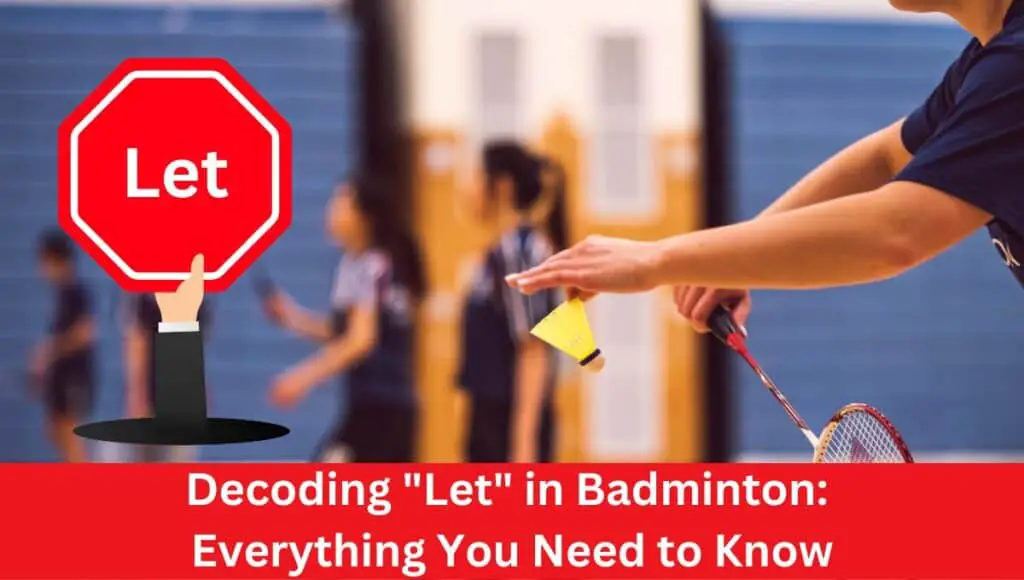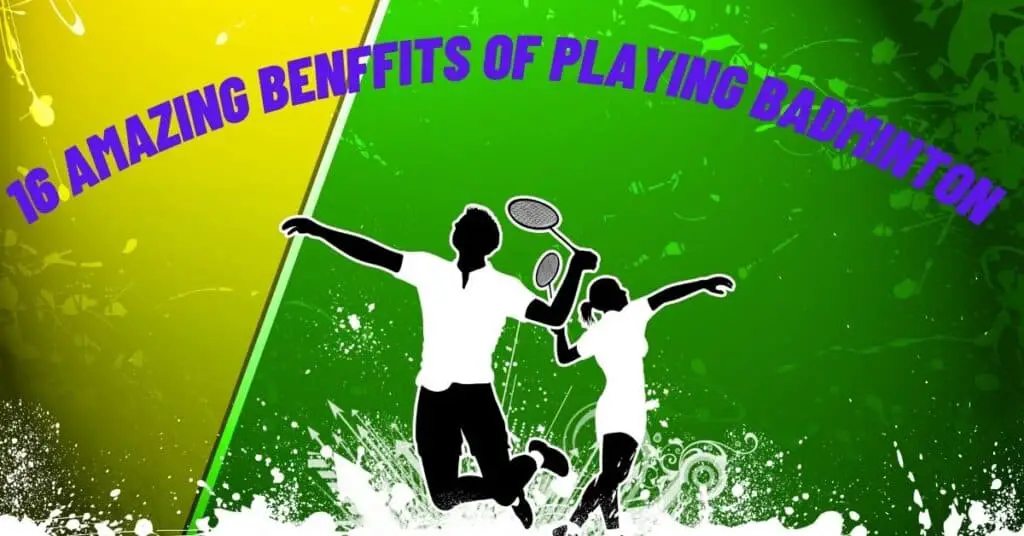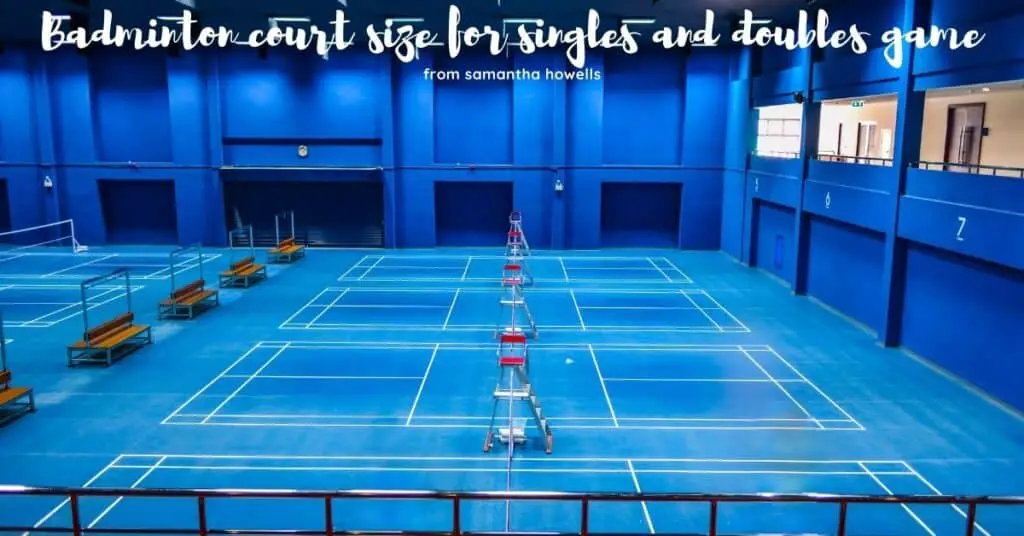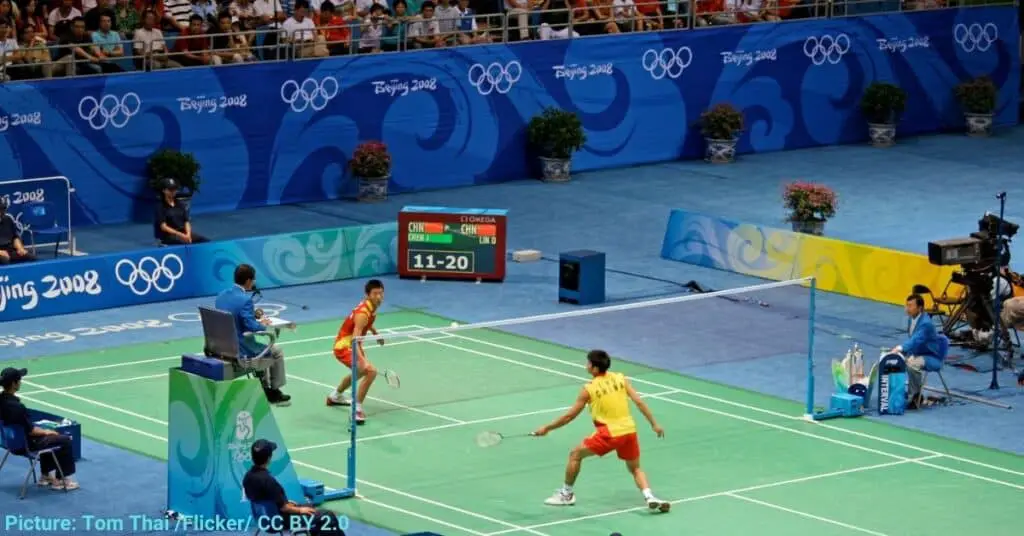Badminton, a sport known for its lightning-fast rallies and quick reflex, not only physically demanding but also is rich in rules and terminologies. Let in badminton is one such term that often raises questions among new players and enthusiasts. It is a very specific word around which certain rules are laid down by BWF, the governing body of badminton.
What is “Let” in Badminton?
‘Let’ shall be called by the umpire, or by a player (if there is no umpire), to halt play
Rule no. 14.1
“Let”, is the term used in the game of badminton to interrupt play. It can be called either by an umpire or by a player. It may happen during ‘serve’ or ‘rally’. In this situation, the point is not counted and is replayed. The player who serves last will have to serve again.
Scenarios When “Let” Comes Into Play
The server serves before the receiver is ready.
Rule: 14.2.1
It is the most common scenario for the temporary interruption of play during a badminton match.
The rule says If the server serves before the receiver is ready, it’s a case of “Let”. The play is halted, and the server serves again for the same point.
Let’s say Player A is serving, but Player B is not ready to receive the serve. In this case, the umpire calls a “Let,” and the serve is retaken.
But if the receiver takes his stance and leans forward to approach the serve, then he is supposed to be ready.
In the absence of an umpire, if you are not ready to receive the serve, raise your hand shouting “Let” so that the server restrains himself from serving.
During service, the receiver and the server are both faulted.
Rule: 14.2.2
It is a rare occurrence in a match when both the server and receiver commit faults. If both are faulty, the umpire calls it a “Let”.
As an example, if both server and receiver are in the wrong service court while delivering or receiving the service, the umpire calls for an interruption.
After the service is returned, the shuttle is caught on the net and remains suspended on its top, or after passing over the net is caught in the net.
Rule: 14.2.3
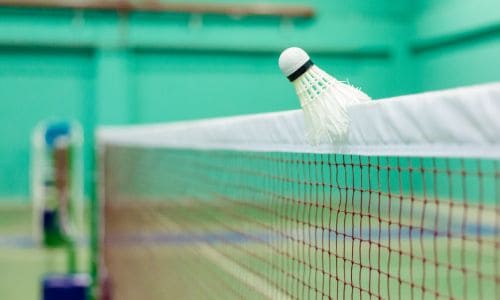
This is a tricky one. After returning the serve, if the shuttlecock gets stuck on the top of the net or after passing over the net, caught on the net at the receiver’s end, it is also “Let” in the game of badminton. But if the shuttlecock gets stuck at the striker’s end, it is a fault.
During play, the shuttle disintegrates and the base completely separates from the rest of the shuttle.
Rule: 14.2.4
This is very unlikely that the base cork and feathers can be disintegrated by a severe intense strike. However, if it happens, may be due to some unnatural manufacturing defects, then the point is played again with a new shuttle.
In the opinion of the umpire, play is disrupted or a player of the opposing side is distracted by a coach
Rule: 14.2.5
Any significant distraction that hampers the players’ ability to focus on the game can lead to a temporary discontinuity. This could include audience loud noises or sudden abnormal disturbances.
If the umpire feels that one of the players or teams is getting some undue advantage or there is a concern about safety, he may call “Let”.
In recreational and club-level tournaments, courts are separated by barriers. It is very natural that a shuttle from an adjacent court flies into your court during a rally and unsettles the continuation of play. This type of incident not only lapses your concentration but also increases the chances of your injury.
Also, if one of the coaches is found instructing his player to get attention during a match, the match official may impose a temporary interruption. The play starts again as per the rules of “Let” in badminton.
A line judge is unsighted and the umpire is unable to make a decision.
Rule: 14.2.6
During a game, if a line judge is unsighted and is not sure whether the shuttle landed in or out and fails to make a call, the umpire tells to play for the same point again.
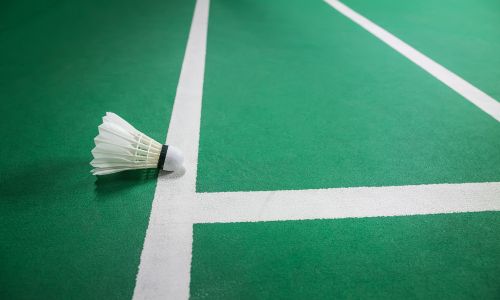
Though this is quite natural in domestic and national competitions, nowadays, in many top-tier international tournaments, there are arrangements for Hawk-Eye Technology to make 100% correct decisions.
In the absence of an umpire, the player closer to the shuttle takes the decision of in or out.
Any unforeseen or accidental situation has occurred.
14.2.7
It is very unlikely to face unavoidable discontinuation like if suddenly the light goes off, a player’s racket malfunctions during play, or suddenly a bird gets into the court and disrupts the rally.
“Let” Vs. “Fault” in Badminton
While both terms indicate irregularities in play, they have different outcomes.
Let: As discussed above, it is an interruption during play but no point is awarded to any player/ team.
Fault: It is a violation of the badminton rules. When a player commits a fault, the opposing side wins a point. For example, if the shuttlecock lands outside the boundaries, or a player touches the net, it’s a fault.
Related Topic: “What are the Most Common Fouls & Faults in Badminton?“
References1. BWF Fansite: Part II Section 1A – Laws of badminton

